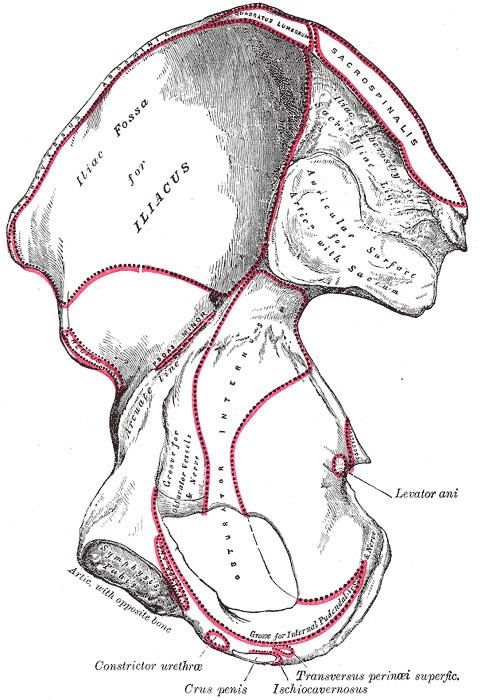Artery lateral sacral artery | ||
 | ||
Origin Spinous processes of T9-T12 thoracic vertebrae, medial slope of the dorsal segment of illiac crest Nerve posterior branch of spinal nerve Antagonist rectus abdominis muscle | ||
The erector spinae (/ˌᵻˈrɛktər ˈspaɪniː/ ə-REK-tər SPEYE-nee) or spinal erectors is a set of muscles that straighten and rotate the back.
Contents
Structure
The erector spinae is not just one muscle, but a bundle of muscles and tendons. It is paired and runs more or less vertically. It extends throughout the lumbar, thoracic and cervical regions, and lies in the groove to the side of the vertebral column. Erector spinae is covered in the lumbar and thoracic regions by the thoracolumbar fascia, and in the cervical region by the nuchal ligament.
This large muscular and tendinous mass varies in size and structure at different parts of the vertebral column. In the sacral region, it is narrow and pointed, and at its origin chiefly tendinous in structure. In the lumbar region, it is larger, and forms a thick fleshy mass. Further up, it is subdivided into three columns. These gradually diminish in size as they ascend to be inserted into the vertebrae and ribs.
The erector spinae arises from the anterior surface of a broad and thick tendon. It is attached to the medial crest of the sacrum, to the spinous processes of the lumbar and the eleventh and twelfth thoracic vertebrae and the supraspinous ligament, to the back part of the inner lip of the iliac crests, and to the lateral crests of the sacrum, where it blends with the sacrotuberous and posterior sacroiliac ligaments.
Some of its fibers are continuous with the fibers of origin of the gluteus maximus.
The muscular fibers form a large fleshy mass that splits, in the upper lumbar region, into three columns, viz., a lateral (Iliocostalis), an intermediate (Longissimus), and a medial (Spinalis). Each of these consists of three parts, inferior to superior, as follows:
Iliocostalis
The iliocostalis originates from the sacrum, erector spinae aponeurosis and iliac crest. The iliocostalis has three different insertions according to the parts:
Longissimus
The longissimus muscle is the intermediate and the largest of the three columns, it has three parts with different origin and insertion:
Spinalis
The spinalis muscle is the most medial and the smallest column. It has three parts:
From lateral to medial, the erector spinae muscles can be remembered using the mnemonic, I Love Spine. I lliocostalis, Love Longissimus and Spine Spinalis.
Training
Examples of exercises by which the erector spinae can be strengthened for therapeutic or athletic purposes include, but are not limited to:
